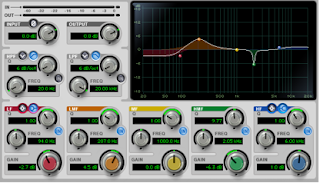As mentioned in Part 1 of this blog, Audio Equalization, EQ is the one of the most important tools to use as an audio engineer. Knowing when or when not to use it, as well as how to use it can have a big impact on the sound you are producing. Here are 5 key tips for using EQ.
Less is More:
When soundmen first start using equalization, they tend to increase frequencies to bring out certain aspects of a sound. This can be useful in some cases, but most of the time this is a no-no. The temptation to have more of whatever it is (e.g., bass presence, guitar, vocals, etc.) is often reinforced by the fact that increasing the EQ level of that channel also increases the volume. After adding a little here, and a little there, a mix can get real muddy real quick. Instead of adding EQ, try and think about what you can take away from the mix to make the overall sound quality better. For example, if you need more presence from the guitar, think about other instruments that are competing with it and reduce of those frequencies in the mix.
Don’t Get Fancy:
Some engineers have every frequency of every instrument memorized and start EQing all their channels to bring out the frequencies that are applied to the instrument on that channel. Although knowing instrument frequency ranges can be good, not every venue, event, or audio equipment is going to be the same. So, before you get all fancy with the EQ knobs, listen to the mix with a ‘flat’ EQ (without equalization applied). If you mic’ed everything well and are in a good venue, then a large amount of equalization should not be needed.
Balance, Balance, Balance:
This goes along with understanding the frequency ranges of different instruments. Sometimes one or more instruments will be competing with each other in the mix. To get a more clear mix, before you crank the volume of one instrument over the other, separate the balance of their frequencies. For instance, the kick drum and bass guitar often compete in the low frequency range creating a muddy mix. Try to balance them out by having one occupy the extremely low frequencies (below 80Hz), and the other occupy a slightly higher range (from 100 to 220Hz). This will give each instrument a distinct ‘space’ in the mix, creating a balance that is clean and identifiable.
Listen to the Mix:
It is good to use the ‘Solo’ button when equalizing a particular channel, or instrument. However, be sure before you make any permanent adjustments to listen to the whole mix. Remember that your job as an audio engineer is not to make a certain instrument sound good, but to make the whole mix sound good.
Give and Take:
If you do us EQ to boost a certain frequency, which is fine, be sure to think about the other instruments in that frequency range and reduce the other instruments in that range. So less EQ is required of the boosted channel.
*For more info on Frequency Ranges check out: ObiAudio


















